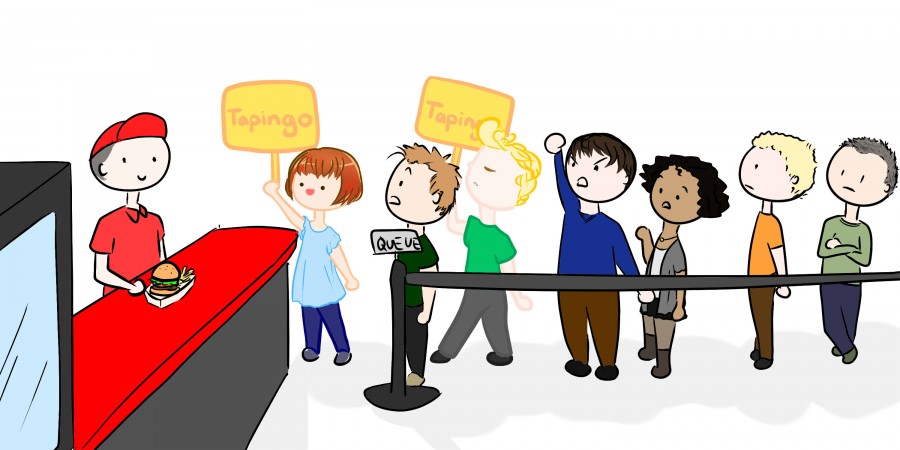Tapingo creates frustration at Swoops
January 24, 2016
The food-ordering app Tapingo changed how Dining Services does business and is a convenience for students, but there are still kinks to work out.
The app was introduced to Eastern last spring and while the start was slow, the app’s popularity quickly grew.
“It was just a surprise how many people were going through the app. It was a slow trickle, we didn’t really see anything at first, and all of a sudden it just came,” interim manager at The Roost Golden Lawrence said.
While he cannot give a number, Lawrence said the percentage of Tapingo orders, out of all orders, is sufficient for Dining Services.
“We started looking at [Tapingo] four years ago when it was new and we saw some real flaws in the system, so we waited a couple of years until they updated it,” Director of Dining Services Dave McKay said.
According to McKay, one of the bigger issues seen in the first generation was with queuing. He said there was no buffer zone, or processing. “As soon as the machine accepts your order, it accepts my order and it wouldn’t start trying to buffer,” he said.
He said Dining Services has worked with the Tapingo company and advances have been made.
According to Casey Weaver-Burdett, a lead worker at Swoops, one of the bigger issues found is that the system sometimes lags and so when a student notices their order has not shown up in the system, the wait time grows. Wait time plus the time it takes to cook the food adds to the ordeal.
“That’s a 30 minute ticket in a supposedly fast-food place, so that’s unacceptable by my book,” Weaver-Burdett said.
While lag is one issue that pops up, the amount of students ordering through the app brings up a different issue.
“They’re seeing a very high volume at certain times and the queuing, even though it’s a split second for you and me to put in an order … the reality of cook time and preparation is different,” McKay said.
The realization of this issue caused some workers at The Roost to raise concerns of whether or not the kitchen had enough firepower to handle the influx of orders.
“We actually bought a whole new piece of equipment to really devote to Tapingo,” said Lawrence. “It’s a new hot case that we got that we put all of our Tapingo orders in. We created a big space for it just so we can expedite these orders a little better.”
Both McKay and Lawrence have heard of students complaining about the potential unfairness of the ordering system. Some complain the Tapingo orders come out before ones that are done traditionally.
“We try the best we can,” said Lawrence. “We don’t put Tapingo orders first, it’s whatever order comes up through our system first.”
McKay said some students get upset with workers.
“What we have had is some customers not understand the system and get frustrated with our employees. ‘Why did that person just walk in and get their order?’ Well, they ordered it through Tapingo. ‘Well why are you taking care of them first?’ Well, their order came in first,” McKay said.
Weaver-Burdett brought up the same issue in saying that while Tapingo is more convenient, “it creates some sort of animosity, too, between the two different types of customers that we have.”
A problem that sometimes falls solely on the students is whether or not they pick up their orders.
“Sometimes people get sidetracked; a better thing comes along. They’ve spent their money, that’s a concern I’ve had,” McKay said.
Weaver-Burdett said if an order is not picked after 20 minutes, the food is tossed. If a student comes in and finds out their order has been tossed, Weaver-Burdett will have his team remake the food.
“It’s created a little bit more of an issue now with the people who have come and waited in line, then they’re waiting for their food as well. So it almost, to some of them, feels like it must be a privilege [for people who order through Tapingo] to just walk in and grab their food,” Weaver-Burdett said.
While the flaws still need to be hammered out and some students complain, Tapingo is staying at EWU. McKay put it simply: “It’s a different way of doing business.”









